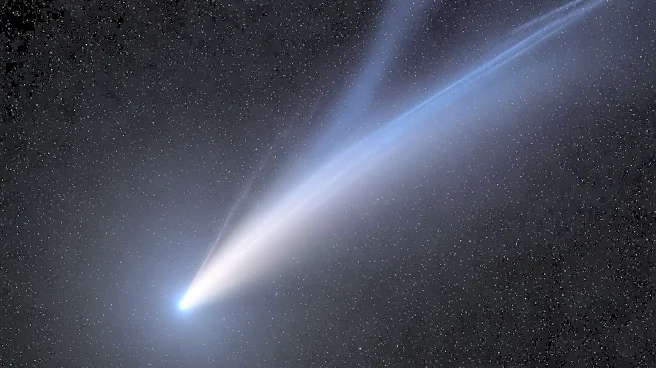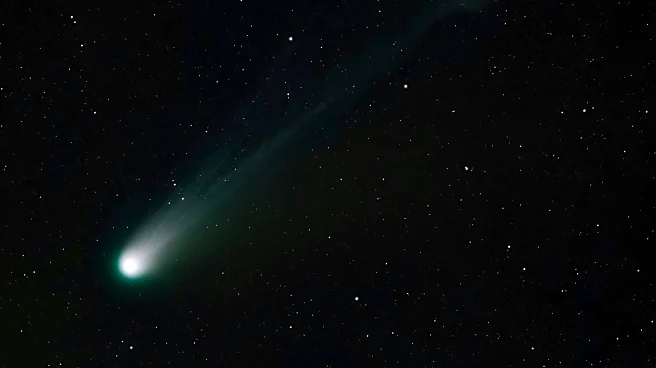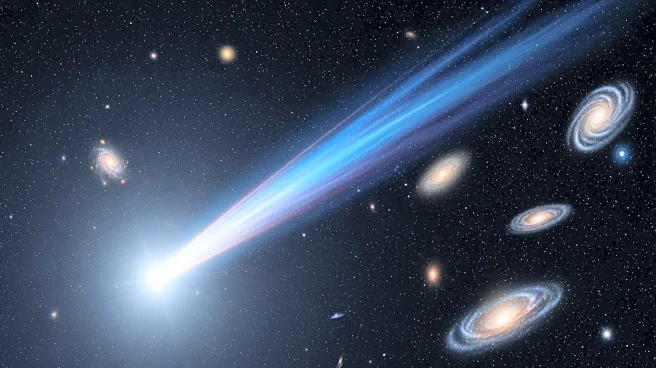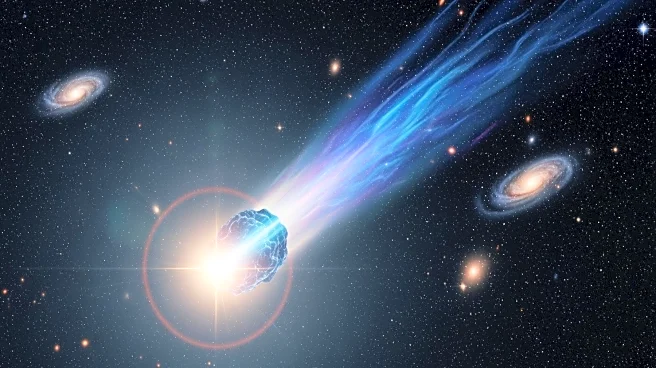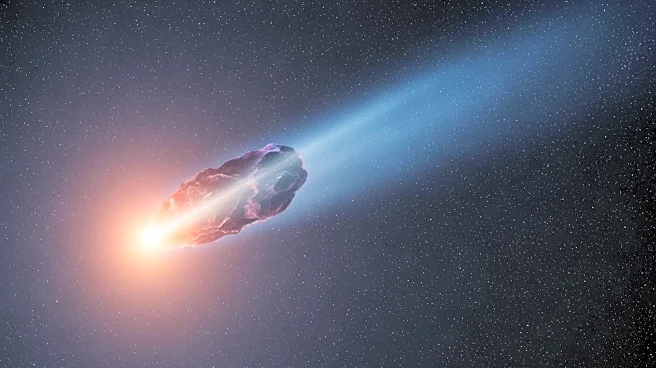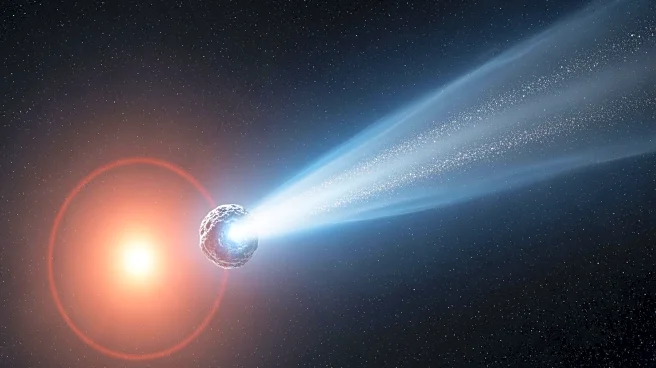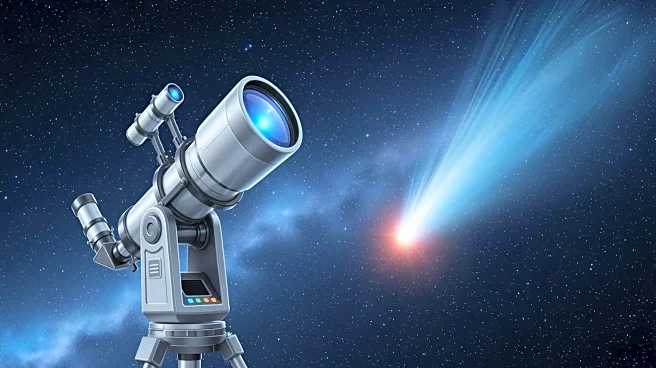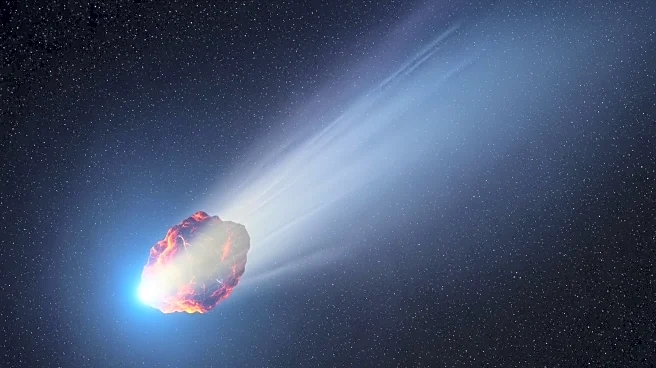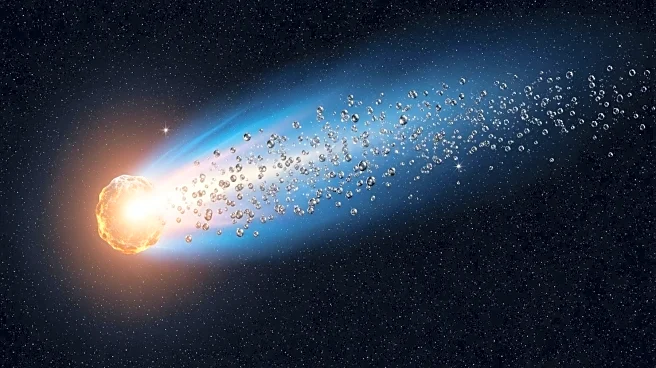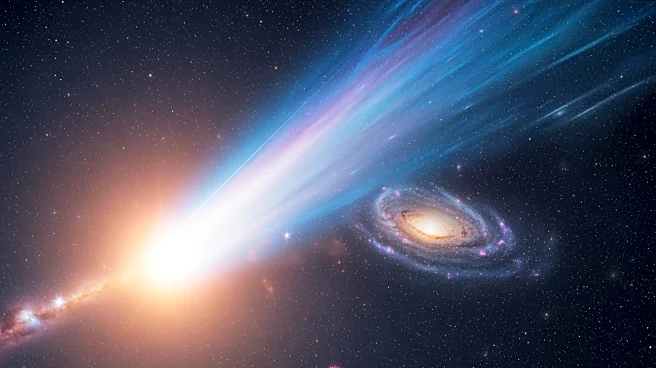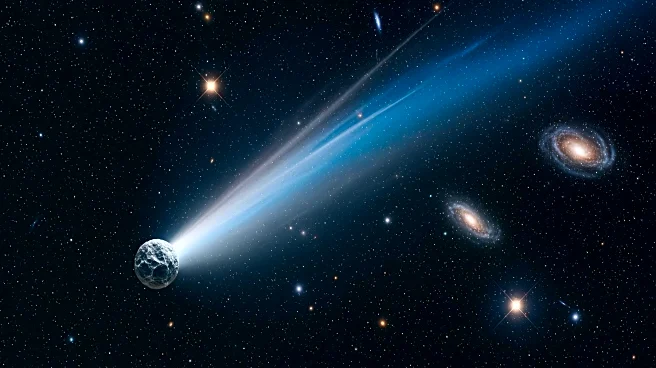What's Happening?
NASA has confirmed that the interstellar comet 3I/ATLAS, which is on a hyperbolic trajectory through our solar system, poses no threat to Earth. The comet will pass at a safe distance of approximately
170 million miles from our planet. This celestial object, only the third of its kind to be identified, offers a unique opportunity for scientists to study material from another star system. The comet's closest approach to the Sun will occur on October 30, 2025, at a distance of about 130 million miles.
Why It's Important?
The passage of 3I/ATLAS through our solar system provides a rare opportunity for scientific study, potentially offering insights into the composition and characteristics of interstellar objects. This event allows NASA to test and refine its planetary defense systems, enhancing preparedness for potential future threats. The data collected from this comet could contribute to our understanding of the universe and the formation of solar systems, benefiting the scientific community and advancing space exploration technologies.
What's Next?
NASA and other observatories will continue to monitor 3I/ATLAS as it travels through the solar system. The comet will remain visible to ground-based telescopes until September 2025, after which it will be obscured by the Sun. It is expected to reappear in December 2025, providing another opportunity for observation. NASA is deploying a range of assets, including the Hubble and Webb space telescopes, to gather data on the comet, which will be analyzed to enhance our understanding of interstellar objects.
